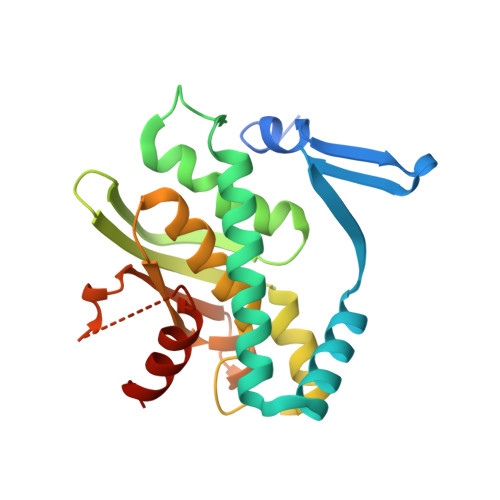Structural Basis of Selective Aromatic Pollutant Sensing by the Effector Binding Domain of MopR, an NtrC Family Transcriptional Regulator.
Ray, S., Gunzburg, M.J., Wilce, M., Panjikar, S., Anand, R.(2016) ACS Chem Biol 11: 2357-2365
- PubMed: 27362503
- DOI: https://doi.org/10.1021/acschembio.6b00020
- Primary Citation of Related Structures:
5KBE, 5KBG, 5KBH, 5KBI - PubMed Abstract:
Phenol and its derivatives are common pollutants that are present in industrial discharge and are major xenobiotics that lead to water pollution. To monitor as well as improve water quality, attempts have been made in the past to engineer bacterial in vivo biosensors. However, due to the paucity of structural information, there is insufficiency in gauging the factors that lead to high sensitivity and selectivity, thereby impeding development. Here, we present the crystal structure of the sensor domain of MopR (MopR(AB)) from Acinetobacter calcoaceticus in complex with phenol and its derivatives to a maximum resolution of 2.5 Å. The structure reveals that the N-terminal residues 21-47 possess a unique fold, which are involved in stabilization of the biological dimer, and the central ligand binding domain belongs to the "nitric oxide signaling and golgi transport" fold, commonly present in eukaryotic proteins that bind long-chain fatty acids. In addition, MopR(AB) nests a zinc atom within a novel zinc binding motif, crucial for maintaining structural integrity. We propose that this motif is crucial for orchestrated motions associated with the formation of the effector binding pocket. Our studies reveal that residues W134 and H106 play an important role in ligand binding and are the key selectivity determinants. Furthermore, comparative analysis of MopR with XylR and DmpR sensor domains enabled the design of a MopR binding pocket that is competent in binding DmpR-specific ligands. Collectively, these findings pave way towards development of specific/broad based biosensors, which can act as useful tools for detection of this class of pollutants.
Organizational Affiliation:
IITB-Monash Research Academy , Mumbai 400076, Maharashtra, India.
















